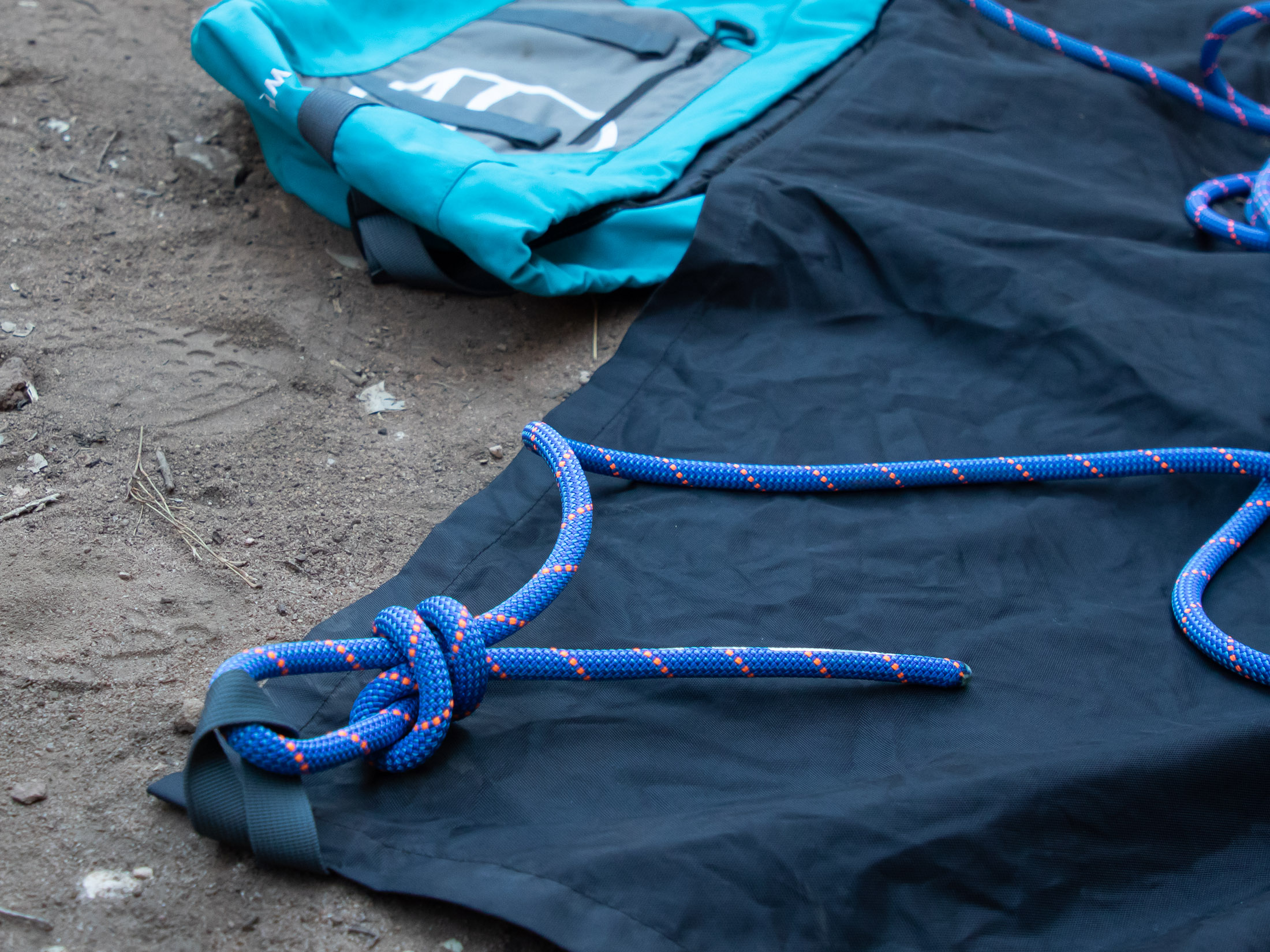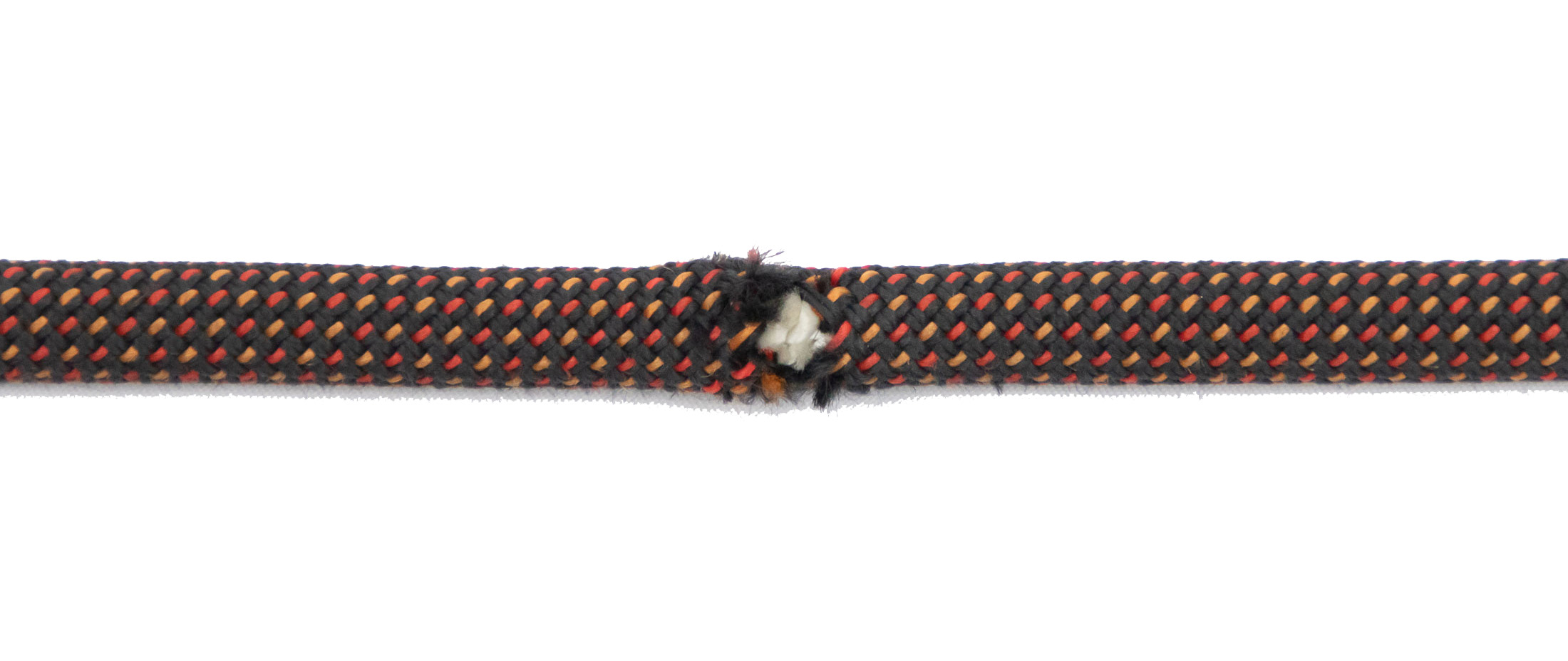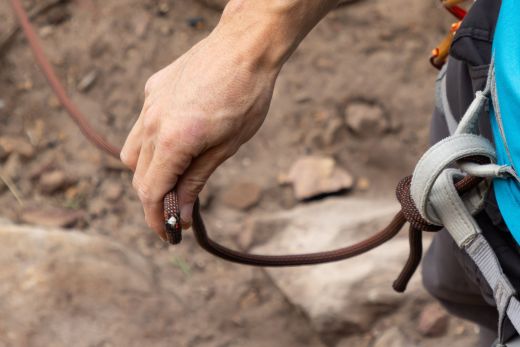If you’re like most climbers, you get a certain amount of joy from using new gear, and a bright and shiny new rope is something to revel in. It handles nicely, inspires confidence, and just looks cool. Just don’t get too used to it because with time it will become dull, worn, and a little more difficult to handle. Of course, you won’t bin your rope as soon as it shows signs of wear – you want to get the most from your investment. But you will eventually have to start thinking about retiring it, a decision that’s not easy to make. Luckily, there’s this handy guide, which can make it easier to tell if it’s time to put your well-used rope out to pasture. Read on, and you’ll learn about the factors that affect the lifespan of a rope as well as the signs that indicate that a rope should be retired.
Life expectancy of a rope
Some brands have made recommendations regarding life expectancy based on how frequently a rope is used, but in reality the lifespan of your rope can vary greatly depending on how the rope is used and the properties of the rope itself – more about those in a minute. Still, it might be useful to know how long the average rope (9.5 – 10 mm single rope) will last when subjected to an average amount of wear in a single session (not your project thrash rope or big wall workhorse). And for that we have the below chart.
Data provided by Mammut and BMC (Similar to Edelrid, Sterling and Petzl)
How long should you keep an unused rope?
It’s important to know that even if you don’t use a rope, it will still age and lose some of its strength and cutting resistance – the most important property of a rope from a safety aspect. The nylon fibers that make up a rope break down slowly over time, and most brands recommend that you retire a rope after a decade even if it hasn’t been used. Some studies (unfortunately not available online anymore) have reported that older unused ropes can survive UIAA drops tests, but the UIAA itself only tests and certifies new ropes. Bottom line: you take an unknown risk when you climb on a rope that is 10+ years old.
The effects of abrasion and impact absorption on cutting resistance
Climbing ropes don’t just break. They fail because they’re cut. Every year there’s an average of two accidents in which a rope is severed by a sharp rock edge or piece of hardware. It follows then that a rope’s cutting resistance is of the utmost importance. And here there are two factors at work.
Abrasion
The more abraded a rope, the more likely it is to be cut over a sharp edge. Why? Because there are simply fewer strands that need to be cut through. Does this mean that a brand new rope cannot be severed over an edge or that a slightly fuzzy rope is dangerous? No, a new rope can still be cut, and a slightly fuzzy rope is okay as long as you don’t load it over a sharp edge. The point is that the way you use a rope or protect it from being cut is as important as its condition.
That said, there are a few reasons you should replace your rope when it starts to get too fuzzy. Besides being less resistant to cutting, a fuzzy rope can also be difficult to belay with when it resists sliding through a device smoothly. And it might even lose some of the handling properties that once made it easy to clip. But that now begs the question, what does ‘too fuzzy’ look like?

The above image shows what minor, major and terminal fuzziness looks like. Minor abrasion is okay, a rope with major abrasion should be relegated to top-roping or rappelling, and a rope with terminal abrasion should be retired.
Impact absorption
Every time you fall on a rope it loses some of its ability to elongate and absorb energy. Although it will regain much of its energy-absorbing capacity when allowed to rest, it will never fully recover. The larger the fall and the higher the impact force (fall factor), the less a rope is able to recover. For the average climber, who will only use a rope in dry conditions, this shouldn’t be a concern. A rope that has just arrested a fall (up to fall factor 1) is still well capable of withstanding another.
However, if you are going to use your rope in wet conditions or risk harsh falls (greater than fall factor 1), you need to be aware that repeated harsh falls and water will have a significant impact on the energy absorption on a rope. Besides increasing the risk or dangerously high load forces, reduced energy absorption also reduces a ropes cutting resistance. Most manufacturers recommend down-grading a rope to top-rope or rappel use after it has been subjected to a fall greater than factor 1.
Factors that affect the amount of abrasion on a rope
In addition to the frequency with which a rope is used, there are at least three factors that affect how quickly a rope becomes abraded.
Fall frequency
A climber who likes to push themselves and fall frequently – as is the case when projecting hard sport routes – is going to work their rope harder than someone who doesn’t fall often. The good news is that you can prolong the life of a workhorse rope by knowing how to cut it so that the high-wear area is moved down the length of the rope. It also helps to buy a rope longer than you initially need it. That way you can cut it several times before it’s too short for your favorite crag.
Style of climbing
On the whole trad routes are usually a little dirtier than sport routes, and it can be harder to keep your rope out of the dirt when you don’t have a rope mat, as is the case when multi-pitch climbing. Trad routes also tend to take the rope around corners over ledges (edges that will put more wear on a rope) more frequently than sport routes do. As a result, ropes used for trad climbing and multi-pitch sport climbing tend to wear evenly along their length while ropes used for single-pitch sport climbing wear faster in the fall zone.

The type of rock
The abrasiveness of the rock that a rope is commonly used on is also a big determining factor in how quickly it will wear. Cheese-grater granite, grit stone and coarser types of sandstone are among the rock types that are toughest on a rope, while more finely-grained types of rock, like quartzite and limestone, tend to be smoother and easier on ropes. The same is true of rock that has been subject to the forces of glacial polishing, like the granite walls of Yosemite.
Other environmental factors
Besides the abrasive effects of rock on a rope, there are two other factors that can cause a rope to age faster. Water can cause a rope to stiffen and lose some of its dynamic properties, and dirt can get in between a rope’s fibers and cause damage from inside the rope. If you don’t think you’ll be able to keep your rope out of the dirt and wet, it would be a good idea to get a rope with a dry treatment, which can help prevent both water and dirt from getting into your rope. Read my article on the benefits of dry treated ropes to learn more about the situations where a dry treatment offers a significant advantage.
Signs that you should retire a rope
Before we get into the visible signs that might indicate that it’s time to retire your rope, it’s important to note that there are some things that affect your rope’s strength that you can’t see. The most important of these is impact absorption. Every fall takes some elasticity out of a rope, but severe falls can reduce a rope’s impact absorbing properties to the point that falling on it would be dangerous. Be aware of any harsh falls in your rope’s history and retire it (or downgrade it to a top-rope or abseil rope) if it has experienced anything higher than a factor 1 fall. If you are unlikely to give your rope this kind of thrashing, it will probably be one of the following signs that indicates it’s time to retire it.
Severe fuzziness
Besides weakening the sheath and making a core shot more likely, severe fuzziness can negatively affect a rope’s handling and make it difficult to belay or lower a climber. Ideally you’d retire a rope as soon as starts to show major fuzziness (see fuzziness levels above), but if you do have to get a dozen more pitches out of it, at least be vigilant against any mushiness in the core, a sign that the mantle might be damaged and is unsafe to climb on.
Sheath slippage
Sheath slippage occurs when a rope’s sheath separates from the mantle and then slips down the rope. This usually occurs at the ends of a rope where it can leave the core exposed. Not only does this make the mantle vulnerable to damage, but it also makes it more likely that the separation will spread further down the rope where the sheath can bunch up and make it difficult to belay or rappel with. Unfortunately it’s hard to stop sheath slippage from getting worse once it has started. Take it as a sign that it’s time for a new rope.
Core shots
A core shot is a hole in the sheath of your rope through which you can see the mantle. This hole can be the result of repeated abrasion (often occurs in a particularly fuzzy section of rope), or it can be the result of the rope being loaded over a sharp edge. Either way, you have to retire a core-shot rope, or if you’re lucky and it’s close to an end, you can just cut off the section with the hole in it.

Flat spots and other deformations
You should also replace your rope if you notice any flat spots or other deformities like kinks or bulges in your rope. Ropes with deformed cores pose a risk of both reduced strength and impaired impact absorption, and should be considered unsafe to climb on. After loading the rope over a square edge or taking a harsh fall on it, inspect your rope for these telltale signs of a damaged core.
Sponginess
Sponginess is another indication that a rope’s core has been damaged. This usually occurs at the ends of the rope – up to the high-wear section where it has been repeatedly hung on or fallen on – so you can usually continue using your rope if you just cut off the affected section. This can mean losing up to several meters at a time – something you’ll want to avoid if you need most a ropes length. Fortunately, there is a way to avoid that. Read my article on when to cut a rope to learn more.
Stiffness
If your rope gets wet, it can become stiff when it dries out. This can also happen when you wash a rope. If it’s in good condition, a rope will usually regain much of its suppleness once it has been worked a bit. What you do need to be cautious of is stiffness that doesn’t soften up. This can be a sign that your rope has been exposed to chemical contamination or too much UV radiation – too much time in the sun. Both of these weaken a rope significantly and are a sure sign that a rope should be taken out of service.
Burns
A stiff sheath can also be the result of a burn. If a stiff section of rope has a translucent glassy, melted, or singed look to it, it’s a sign that it has been damaged by heat. Besides making the sheath brittle and difficult to handle, a burn can also damage a rope’s core and compromise its strength. If a burned section can’t be cut off, a rope should be binned.
Know this
Industry standards for the life expectancy of a rope are a good rule of thumb, but they have their limitations in that they don’t take into account the effects of abrasion, contamination and severe loads on energy absorption and cut resistance. Ultimately, knowing when to retire your rope comes down to inspecting your rope regularly and deciding on the level of risk you’re willing to accept. Use the age of your rope and level of use as a guideline, but then also give your rope a look over every few sessions and after it has been worked hard.
Top tip: If you fall on your rope regularly, know that you can prolong its life by regularly cutting short sections off either end. This will move the high-wear patch down the rope and prevent severe fluffiness from developing in any one point – something that would require you to cut off several meters at a time.
